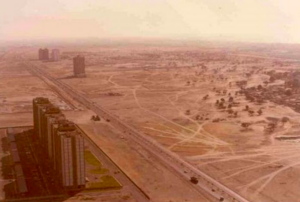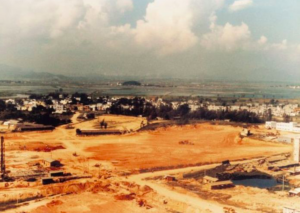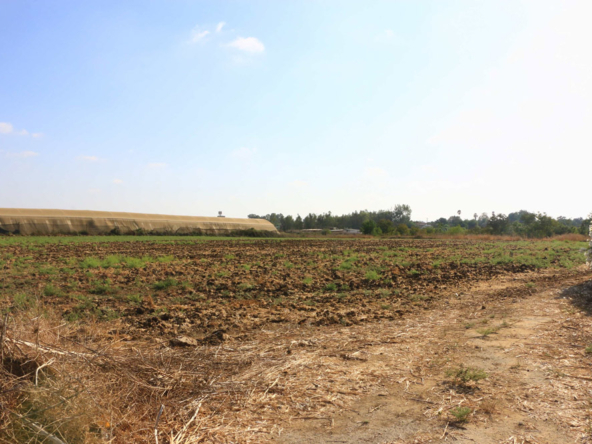[ssba-buttons]
Before discussing Land Banking, take a look at your situation. If you are like most real estate investors, you are probably pursuing this activity with one or two main goals:
- BUY A PROPERTY AND RESALE IT TO MAKE A PROFIT (short or medium term).
- BUY A PROPERTY AND CREATE A RELIABLE PASSIVE INCOME SOURCE (by renting it out, for example).
Indeed, these two strategies remain completely legitimate and proven methods. Moreover, they have created a lot of wealth for many real estate investors and individuals.
However, of all the different methods of investing in real estate, one of the most overlooked strategies is: the Buy-and-Hold technique known as Land Banking.
What is Land Banking?
The name suggests and almost exactly expresses what it means. Rather than putting money in a savings account – (where the individual, investor will earn a maximum of 1% interest each year) – or in the stock market, some investors have adopted an alternative approach.
Engaging in Land Banking or investing in land acquisition. By doing so, they have chosen to place their money in a tangible fixed asset. It cannot be stolen or destroyed. They invest in land and its potential in the short or medium term.
Agricultural or vacant land remains overlooked by most new investors. Because, let’s be honest, it doesn’t seem that exciting at first glance. However, acquiring land still presents significant interest.
Unlike most residential and commercial buildings, owning land costs virtually nothing. Notably,
- No utility payments,
- No tenant issues,
- No termite infestations,
- No leaking faucets,
- No broken toilets,
- No mortgage or loan payments (in the context of an investment purchase).
Let’s think together: You buy agricultural land before permits today, you don’t take care of it for 4 to 8 years, and when you come back, nothing will have changed. The land will still belong to you, it will remain in the same place:
Do you think this investment is safe or interesting?
And think about the economy of land! It is a resource whose supply is always decreasing and is experiencing constant demand. We ultimately always need more land. Given the value proposition of owning land, I often find myself scratching my head and wondering, “Why aren’t more investors involved in land acquisition?”
One of the most well-known examples of Land Banking over the past centuries is John Jacob Astor. This real estate speculator used this strategy to become the first multimillionaire in the United States. He realized the power of this ‘Land Banking’ investment when he bought large tracts of land that are now known as “Manhattan.”
He acquired this land at a time when no one else recognized the opportunity. At the time of his death, Astor’s estimated net worth reached $110.1 billion. This made him the fourth richest person in American history.
Why is Land Banking overlooked?
Most investors do not pay much attention to this opportunity because they lack patience. People want their money now; they do not want to wait several years to realize their gains.
This is a comprehensible objection to land investment, and I have made some of my own investment decisions based on the same logic.
Upon reflection, what about the long term? And retirement? What kind of returns do we have left if the stock market crashes?
Think about 10, 20, or even 30 years from now – what will real estate look like, and what decisions should you make TODAY to make the most of the future?
Just take a look at a few examples of situations where Land Banking made sense
SHENZEN 1980

SHENZEN 2010

DUBAI 1991

DUBAI 2014

Think about it! What if you had bought land in these areas BEFORE their growth explosion? What would your profit be 5 to 10 years later?
How can you start Land Banking?
Look at your nearest large area and compare it to what it looked like 10 or 15 years ago.
New neighborhoods are popping up all the time! New commercial developments, new industrial parks, new retail establishments are always being created.
All it takes is for an investor to decide and buy land on the outskirts of a city, then wait for the population to grow. Developers buy properties at low prices, before anyone else perceives their value. Then they just wait for the city to develop.
When this happens, land prices increase significantly, and they can profit from their land investments.
Of course, it’s not that simple; many factors and information must be considered to properly define the best areas and find the best land.
MANY multi-millionaires have become so through this unique strategy. It’s your turn to think about an investment strategy to diversify your investments.
Israland offers you many deals in this regard; we verify and select numerous plots of land each year. It must be acknowledged that the land market in Israel has astonishing characteristics:
- Land, even agricultural, in Israel has never lost value since the establishment of the State.
- The value of land, even agricultural, increases on average by 2 to 3% per year without even changing its status.
- The added value of agricultural land when its status changes is 10 to 20 times its value.
Example of Land Banking
Prenons un terrain acheté autour des 75.000 Shekels avant permis. Il avoisinera les 1,5 million à plus de 2 millions de Shekels, une fois les permis obtenus. Calcul en fonction de sa localité et des différences entre les diverses autorisations de construction (résidentielle, commerciale, industrielle…).
Plus le terrain a un potentiel de construction, plus le terrain rapportera des intérêts.
Le travail d’ Israland est de trouver les villes de demain. Ces zones négligées par de nombreux investisseurs mais qui permettent des rentabilités extraordinaires sur quelques années.
What is the right investment strategy for Land Banking in Israel?
Dans un premier temps, renseignez-vous sur les opportunités en sommeil. Vérifier les informations en suivant notamment Israland et l’actualité foncière en Israël.
- Constatez par vous même le besoin de terres pour les municipalités. Notamment pour celles qui recherche un développement constant et ceci existe, pratiquement dans l’ensemble du pays.
- Étudiez la démographie israélienne de ces 10 ou 20 dernières années. La population israélienne a doublé en 35 ans pour atteindre prés de 9 Millions d’habitants (dont 74% de juifs) aujourd’hui. Les démographes israéliens prévoient une progression jusqu’à plus de 15 millions d’habitants en Israël d’ici 2050…
- How will this demographic change affect land prices in Israel?



